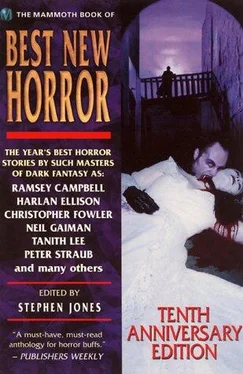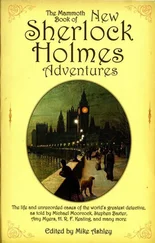Neutral at last, he kicked until his feet lost her in the steam, until she was entirely gone from there.
And then he felt his way up the stairs and out into the bath-house where a couple of taps were hissing and spitting, scalding to his hand as he turned them on.
He scrubbed one of the baths as best he could, and washed every piece of clothing that he’d brought. He laid them out on the portico steps, and came back naked to fill the bath again.
Lying back with his eyes closed, with burning water lapping at his ears and the corners of his mouth, he thought that nothing was finished, even now; but it didn’t seem to matter. Let his father stumble blindfold against death, let his mother dangle, let the girl come for kicking when she chose. Or when he called her. The world was wider, much wider than this; and here he was only on the fringes of it yet, he hadn’t even been up to the house…
* * *
Later, in the darkness, when his clothes were dry, he thought he might walk down to the lake and into the water. He would be borne up, he thought, and carried over, because in his pockets he carried the keys to D’Espérance.
* * *
But actually, he slept; and in the morning he walked the other way, he walked into town looking for the solicitor.
Stephen Laws
The Song My Sister Sang
Stephen Laws lives and worksin Newcastle upon Tyne. To date he has published ten horror-thrillers — Ghost Train, Spectre, The Wyrm, The Frighteners, Darkfall, Gideon (winner of the Children of the Night Award), Macabre, Daemonic, Somewhere South of Midnight and Chasm — which have been widely translated around the world.
His award-winning short stories have appeared in various magazines, newspapers and anthologies (most recently in Best New Horror 9), and he is the regular host of the Manchester Festival of Fantastic Films. His first solo collection of short stories, The Midnight Man, was recently published by Darkside Press.
“The abandoned open-air swimming pool which is the centrepiece of ‘The Song My Sister Sang’ really did exist,” Laws reveals. “The central character’s description of the place is completely factual. His memories of playing there, the sights and sounds — they’re all mine. The history of the place is also true. It remained derelict for many years, just as described in the story. The place always haunted me, and I knew that one day — when I had the right story — it would feature in my work in some form or other.
“When I was writing my novel Somewhere South of Midnight, a friend of mine, who works for the local authority responsible for the place, managed to get permission for me to get through the padlocked gate with a video camera. I spent a half-day exploring the pool, the sluices, the derelict changing rooms with their rusted curtain rails and disintegrated tile floors. It was perfect for what I had in mind — the setting for a confrontation between the novel’s main character and a professional hit man.
“I’d just finished writing the sequence when my friend rang me to say: ‘You’re never going to believe this — but the council has just approved plans to demolish the place and build an outdoor sea-life feature on the site.’ Three months later, the swimming pool was bulldozed out of existence. I suppose I could have just left the sequence as it was, but somehow it didn’t feel right. Perhaps I thought that using a real-life setting, when that setting no longer existed, was dating the book somehow. So I rewrote the sequence for the novel, creating a fictional derelict health club up on the promenade overlooking the site where the swimming pool used to be.
“But this strangely haunting place just wouldn’t leave me alone. I knew that there was a story there somewhere, waiting to happen. Eventually, it did. When Steve Saville asked me for a contribution to his anthology Red Brick Edens and its theme of urban decay, I knew then that the location had found not only its story but also its home. The swimming pool has gone forever — all that remains is twenty minutes of incredibly eerie video footage on a shelf in my study. And, of course, ‘The Song My Sister Sang’.”
* * *
For most people living along the North-East coast, the Big Event that summer was what happened to the coast-line and its wild-life.
Just say the words Edda Dell’Orso and see what kind of reaction you get from the local fishermen who ply their trade out of North Shields Quay. The captain and crew of that ill-fated tanker never made it out of the wreck alive, so the Inquiry could only reach an open verdict; even though they’d had the specialists and the engineers and the aquamarine people from Blyth out there to try and find out why the tanker had drifted so close to shore. Close enough to become grounded; close enough to gash one of its main tanks on seabed rocks, close enough to cover the entire length of beach for ten miles on either side with a smothering sea-blanket of crude oil.
That, they’ll tell you, was the horror that marred last summer. They’re wrong. The real horror wasn’t to do with the fouled-up beaches and the near-death of the local fishing industry. It might have all begun with the Edda Dell’Orso, but the real horror was. how do I put it?. much more personal than that.
It happened in the abandoned swimming pool on Tynemouth beach. Derelict and boarded up. Rotting under the salt-spray and the sun and the cruel sea winters. That’s where the real horror began.
And where I might have lost my sanity.
Very soon now, I’ll know for sure.
The open-air swimming pool had been a real crowd-puller, from its opening at the turn of the century right up until its closure in the 1960s. Built in an oval-shape, below the cliffs on Tynemouth beach, its sluices were open to the sea. One side faced the cliffs, the other out to the sea; the rounded end of that oval looking down on clustering rocks where children climbed and hunted for crabs and winkles. Back then, the pool itself had been tiled in blue and white; the surface of the water glittering under the summer sun like molten silver. I played there as a kid, with my sister; just before the place was closed. And every time I try to get a picture of it as it was then, I always seem to get sounds instead. The sound of the sea, beyond the walls and in the sluices. The cries of children splashing and diving matched by the wheeling cries of seagulls overhead. The cliff side of the pool was bordered by the pumping station and its chlorine tanks. There was a side gate there, with a steep and tightly winding set of stairs that took you straight up to the promenade above. The main building housed the changing area. Inside was a maze of mini-corridors with individual tiled cubicles. Plastic curtains hung from the overhead rails. Again, the sounds come back to me. It seemed that the place was always filled with laughter; echoing screeches as kids ran and played; the slap of bare feet on tiled floors as they dashed in and out of those cubicles, consumed by holiday excitement. Lots of Scottish accents, I remember.
Bloody funny, that. The accents, I mean.
Every “factory-fortnight”, all the shipyard workers from the River Tyne would pack the family up to Scotland for the traditional family holiday in cheap digs on the sea front. At the same time, all the shipyard workers from the Clyde would do the same thing, and head down here to Tynemouth and Whitley Bay. Staying in the same cheap bed and breakfasts, and doing pretty much everything their Geordie compatriots would be doing north of the border. I often wondered why everyone didn’t just stay where they were. Anyway, I seemed to make a lot of Scottish holiday friends back then. Close as blood-brothers for two weeks, then gone forever after. Even though Amy and I were local kids, that swimming pool was an exotic visit for us; maybe two or three times a year, in a good summer.
Читать дальше











